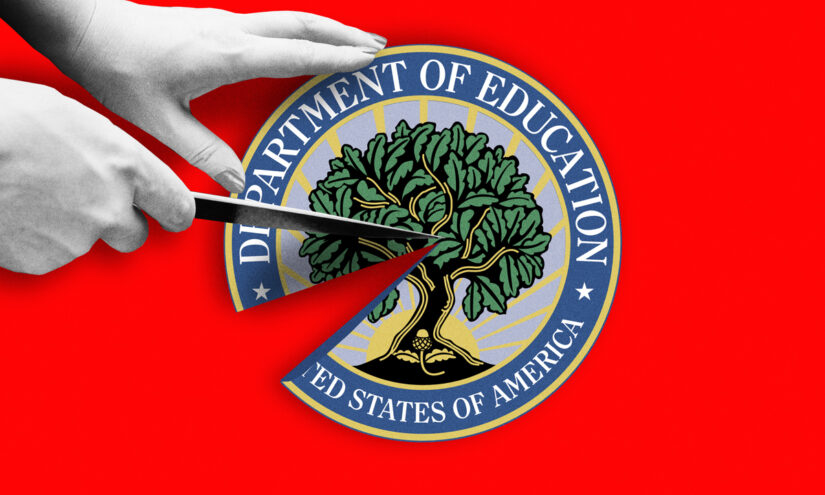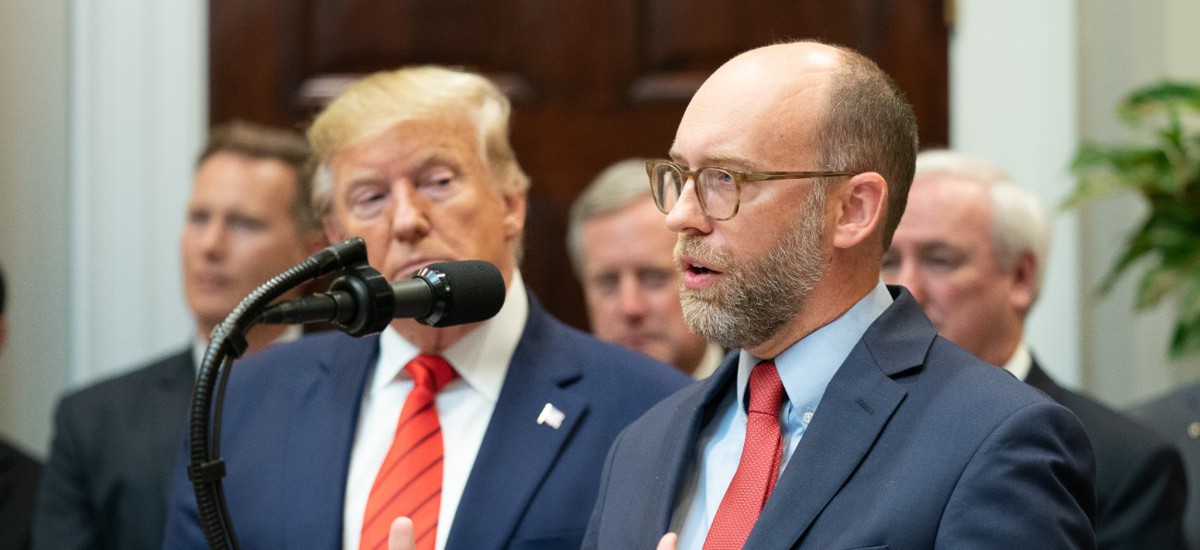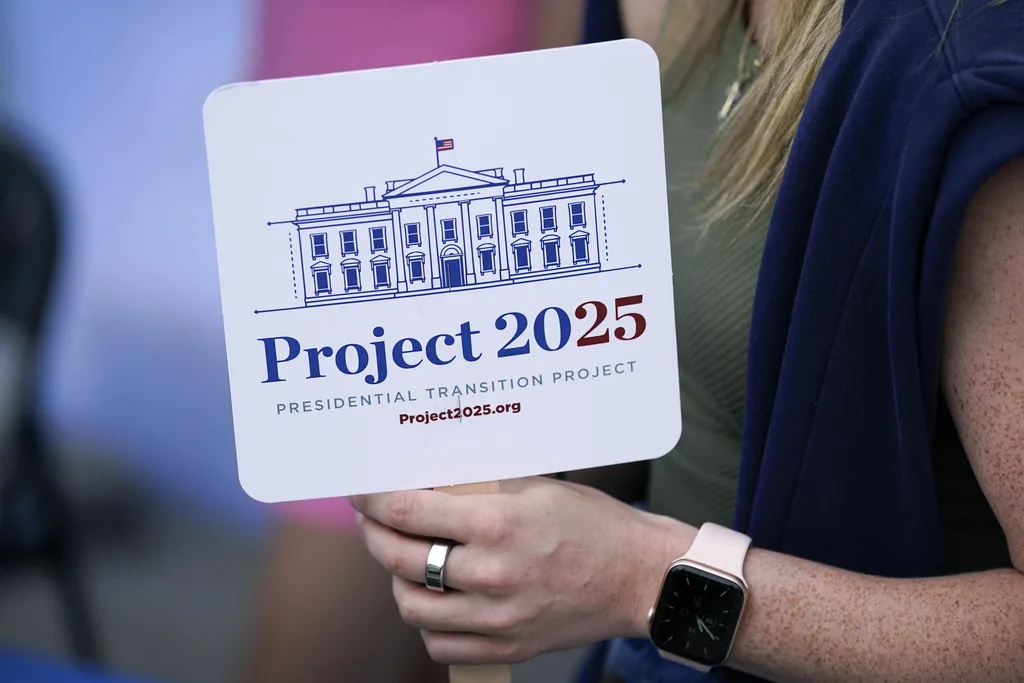Originally by at EducationWeek.
If enacted, Project 2025, the conservative policy agenda that has become a centerpiece of discourse around the upcoming presidential election, could jeopardize access to an adequate education for millions of low-income students and students with disabilities through the significant funding cuts and overhauls it proposes, experts say.
The 922-page document offers what its authors from the Heritage Foundation, a conservative think tank, call a “vision for a conservative administration” in its first 180 days. The detailed plan includes proposals to phase out the $16 billion Title I funding program over the next 10 years, convert the $13 billion IDEA program for students with disabilities to block grants or a private school choice offering, and eliminate the U.S. Department of Education.
Former President Donald Trump, the GOP presidential nominee, said on social media last month that he has “no idea who’s behind” Project 2025 and finds some of its proposals “absolutely ridiculous and abysmal.” But a CNN review found more than 200 people associated with both Project 2025 and the first Trump administration, including six cabinet secretaries who helped write or collaborate on portions of the playbook.
The sections of the document that cover K-12 schools focus primarily on reducing the federal government’s role in education policy, often with a stated goal of shrinking federal and state bureaucracies and cutting regulatory red tape associated with federal education programs.
While school funding is among the topics covered in the report, Lindsey Burke, the Heritage Foundation’s education policy director, told Education Week earlier this year that a new conservative administration should immediately prioritize rewriting Title IX rules and reversing efforts to cancel student debt.
School districts receive about 10 percent of their funds from the government, with state and local sources supplying the lion’s share, so the proposals are necessarily limited in their reach. Still, the project would dramatically alter the federal footprint in education that began with the creation of Title I in 1965.
The exact consequences of these proposals are difficult for researchers to game out because they would reverse decades of precedent and create new opportunities for states and school districts to decide how to allocate resources. For instance, if Title I ends, some states might create their own programs to supply schools with extra resources for vulnerable students, while others might not.
Some of these proposals could be politically unpalatable in rural areas where public schools are the only option for families and private schools are limited, or in high-poverty areas—both urban and rural—where schools rely on federal funds to pay for crucial services.
But Project 2025 could nevertheless take shape in the coming years. A second Trump administration may be emboldened by recent Supreme Court decisions to seize greater executive power to advance its agenda, said Dan Goldhaber, director of the Center for Analysis of Longitudinal Data in Education Research, or CALDER, at the American Institutes for Research.
At a minimum, ideas like shifting U.S. Department of Education functions, like IDEA, to the existing U.S. Department of Health and Human Services are likely to cause some chaos.
“Any time that you’re talking about a relatively complex system that the machine has been running for a long time, a big change is likely to bring about at the very least short-term dysfunction,” Goldhaber said.
Here’s why researchers are concerned about the possible effects of Project 2025 on school funding.
The agenda makes a key mistake about Title I, a researcher says
Project 2025, on page 350, says Title I “provides additional taxpayer resources to schools or groups of schools in lower-income areas.
But that’s not quite right, says Nora Gordon, an economist and professor at Georgetown University who has extensively researched federal funding for education.
Rather, Title I supplies the vast majority of the nation’s 13,000 public school districts with money to spend on their highest-poverty individual schools.
“Almost everyone’s got skin in the game,” Gordon said.
Even as Democrats in Congress and the Biden administration in recent years have pushed to dramatically increase the annual investment in Title I, the program has its fair share of critics from across the political spectrum.
Researchers have pointed out major formula flaws that end up directing less money to the neediest states and districts. For instance, large cities and remote rural areas tend to get the most money through the formula, which can leave out some poor districts that don’t fall into either category.
And critics argue that the design of the program sometimes creates incentives for districts to spend the money on initiatives with only a tangential connection to core classroom instruction.
There’s no inherent reason Title I has to be the main federal mechanism for offering money to schools, Gordon said.
“It could be some other thing,” she said. “But I don’t think that’s in [Project 2025].”
The federal government would no longer smooth disparities between states
Enacted in 1965 as part of the Elementary and Secondary Education Act, Title I was crafted in part to help discourage massive gaps in school funding from one state to the next. The broader ESEA law was one plank of President Lyndon B. Johnson’s War on Poverty.
Some states have a bigger tax base than others, which means they have a larger pool of resources to devote to K-12 education. Schools in states like New York, Pennsylvania, and Wyoming get more than $20,000 per student from state and local sources, while schools in Arizona, Idaho, and Utah get just over $10,000 per student.
Currently, that’s where the federal government comes in with efforts to shrink those gaps.
“If you were to say, we’re turning this into something that is funded with state revenue, you’re missing a huge contribution to the program,” Gordon said.
Burke, the author of the education section of the Project 2025 playbook, argues that a new approach to funding is necessary given that academic outcomes haven’t significantly improved since Title I was enacted more than half a century ago.
“Federal money is inevitably accompanied by rules and regulations that keep the influx of funds from having much, if any, impact on student outcomes,” the report reads. “It raises the cost of education without raising student achievement.”
The idea of scaling back the federal role in funding schools is particularly galling in light of recent research showing that the increased federal investment in schools with ESSER funds led to measurable improvements in student outcomes, said Augustus Mays, vice president for partnerships and engagement at EdTrust, a nonprofit advocacy group.
“Historically, when we left it to states, they didn’t always do the right thing,” Mays said.
Key mechanisms for accountability would disappear
Schools are only eligible for Title I money if they participate in test-based accountability systems that contribute to a nationwide picture of students’ academic progress.
Some states would likely pull back on those efforts if they no longer had to do them in order for schools to receive federal funding. Project 2025 also recommends giving states the latitude to opt out of any federal education program and direct that funding according to their own priorities, citing a desire to “reduce the bureaucratic and compliance burden” associated with those programs.
“They don’t do things if they don’t have a carrot,” Gordon said. “Title I has been the big carrot.”
Meanwhile, another Project 2025 proposal for revamping education funding raises accountability questions.
Currently, the federal government sends IDEA funds to states, which in turn reimburse school districts for the often-steep costs of special education services for students with disabilities. The Heritage Foundation is proposing that those funds instead go directly to districts, or to parents, who can choose to invest them in providers of their choice, as some already do with state-funded ESAs.
If that were to happen, governments and the public would no longer have a clear sense of whether students with disabilities are receiving the legally mandated “free and appropriate public education” to which federal law entitles them, Gordon and Goldhaber said. Private school and homeschool providers range widely in quality and rigor, and states already struggle to collect data and maintain consistent standards in those arenas.
The future is unknown, but political conditions appear to be evolving
Studies by Gordon and others have shown that the early years of Title I resulted in an overall increase in spending on schools, rather than simply a shift in spending from local and state governments to the federal government.
A logical assumption, then, would be that overall spending on schools, particularly for students with high needs, could decrease if Title I went away.
But “there’s no empirical evidence we could draw on to say what would happen if the federal government no longer had the requirement and no longer provided the money,” Goldhaber said.
Similarly, there’s no way to know for sure that Project 2025 would charge ahead unencumbered if Republicans took the White House and both chambers of Congress.
Republican control of the legislative and executive branches in states doesn’t always mean conservative priorities like private school choice have made headway, as with the recent legislative debate over education savings accounts in Tennessee. Congress didn’t make changes to federal education funding during the first Trump administration, even when Republicans held majorities in Congress.
Even in the most conservative congressional districts, cutting money for public schools has historically been unpopular, Marguerite Roza, director of the Edunomics Lab at Georgetown University, said during a recent session at the Education Commission for the States conference in Washington. For that reason, she thinks major changes to federal funding for schools aren’t likely regardless of who’s in power.
But reporting in various outlets indicates that Trump’s team is coming into a potential second administration more prepared to advance its agenda and weed out dissenting voices from the federal bureaucracy.
Plus, the Supreme Court has in recent months strengthened the powers of the executive branch with several decisions, including one that extends immunity from prosecution to presidents acting in an “official” capacity.
“Before the first Trump term, I would have thought probably it’s unlikely that we would see radical change in the way that the federal government chose to involve itself with public education,” Goldhaber said. “I think several things have changed since then that make the prospects for enacting more radical reforms significantly greater.”
Read the Original Story





